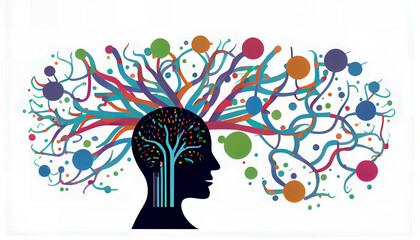
Quantitative Electroencephalography (QEEG) brain mapping is a powerful tool used to assess brain function and identify abnormalities in brain activity. It provides detailed insights into the electrical activity of the brain, helping clinicians diagnose and treat a variety of neurological and psychiatric conditions. Here's an in-depth look at how QEEG brain mapping works.
Understanding QEEG Brain Mapping
The QEEG brain mapping entails the procedure of describing and quantifying the electrical activity of the brain. This technique utilizes EEG which is used to capture brain waves. A standard EEG gives a topographical mapping of the brain waves while a QEEG enhances this by using complex mathematical equations to quantify and analyze the data and come up with a real life picture of the brain activity with special emphasis on certain parts of the brain.
The Process of QEEG Brain Mapping
Preparation
Prior to the QEEG procedure the patient may be required to abstain from caffeine, medication or any other substances for that matter, that may interfere with his/her brain functioning. In the process the patient remains seated comfortably and the cap containing electrodes is mounted on the patient's head. These electrodes are meant to record electrical signals generated by the brain.
Data Collection
These electrodes on the cap measure and document brain activity or the electric potential of the skull. These signals are then amplified and analog to digital converted for further processing. The test generally takes between 20 to 40 minutes and throughout the evaluation, the patient might be required to count, eyes close or solve tasks.
Data Analysis
The data is then analyzed by using computer software. Once the data has been analyzed it is then put through an advanced software. The software matches the patient's brain wave to normative databases, which are the depictions of brain wave data of normal persons. It is also useful to compare the obtained data with normal brain activity to reveal many possible dysfunctions and their causes.
Brain Mapping
Imaging of all analyzed data in the form of a brain map is used to obtain visualization of the brain wave activity in different parts of the brain. This map shows regions that are hyperactive or hypoactive/which clinician can use to understand the problem.
Applications of QEEG Brain Mapping
Diagnosis
QEEG brain mapping is valuable in diagnosing conditions such as ADHD, anxiety, depression, traumatic brain injury, epilepsy, and other neurological disorders. By pinpointing specific areas of abnormal activity, clinicians can make more accurate diagnoses and develop targeted treatment plans.
Treatment Planning
The detailed information provided by QEEG brain mapping aids in creating personalized treatment plans. For instance, in neurofeedback therapy, the brain map guides the training process by identifying areas that need improvement. This targeted approach enhances the effectiveness of the treatment.
Monitoring Progress
QEEG brain mapping can also be used to monitor the progress of treatment. By conducting follow-up brain maps, clinicians can assess changes in brain activity over time, ensuring that the treatment is working as intended and making necessary adjustments.
Conclusion
QEEG brain mapping is a cutting-edge technique that provides valuable insights into brain function. By measuring and analyzing electrical activity, it helps diagnose and treat various neurological and psychiatric conditions. Its non-invasive nature, objective data, and comprehensive insights make it a powerful tool in modern neuroscience and mental health care. As technology continues to advance, QEEG brain mapping is likely to play an increasingly important role in understanding and improving brain health. To learn more about it, you can reach out to Shifa Health. Visit the website!





